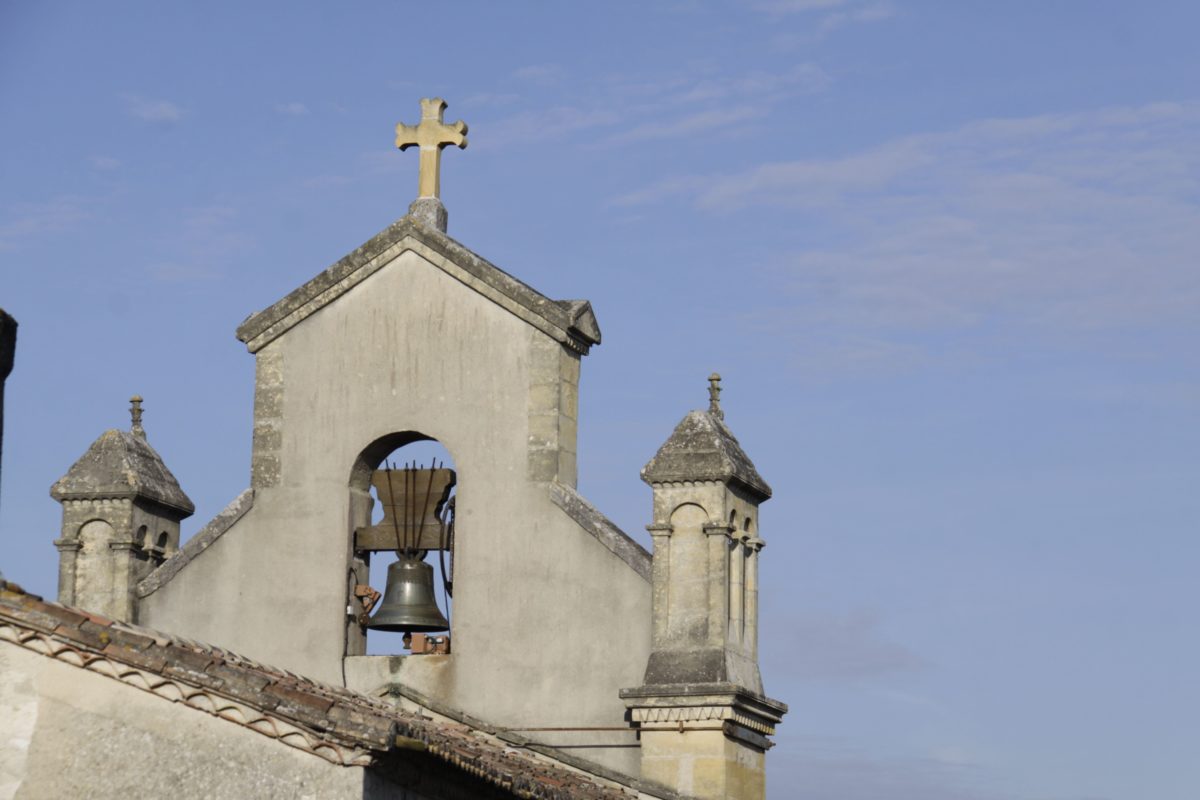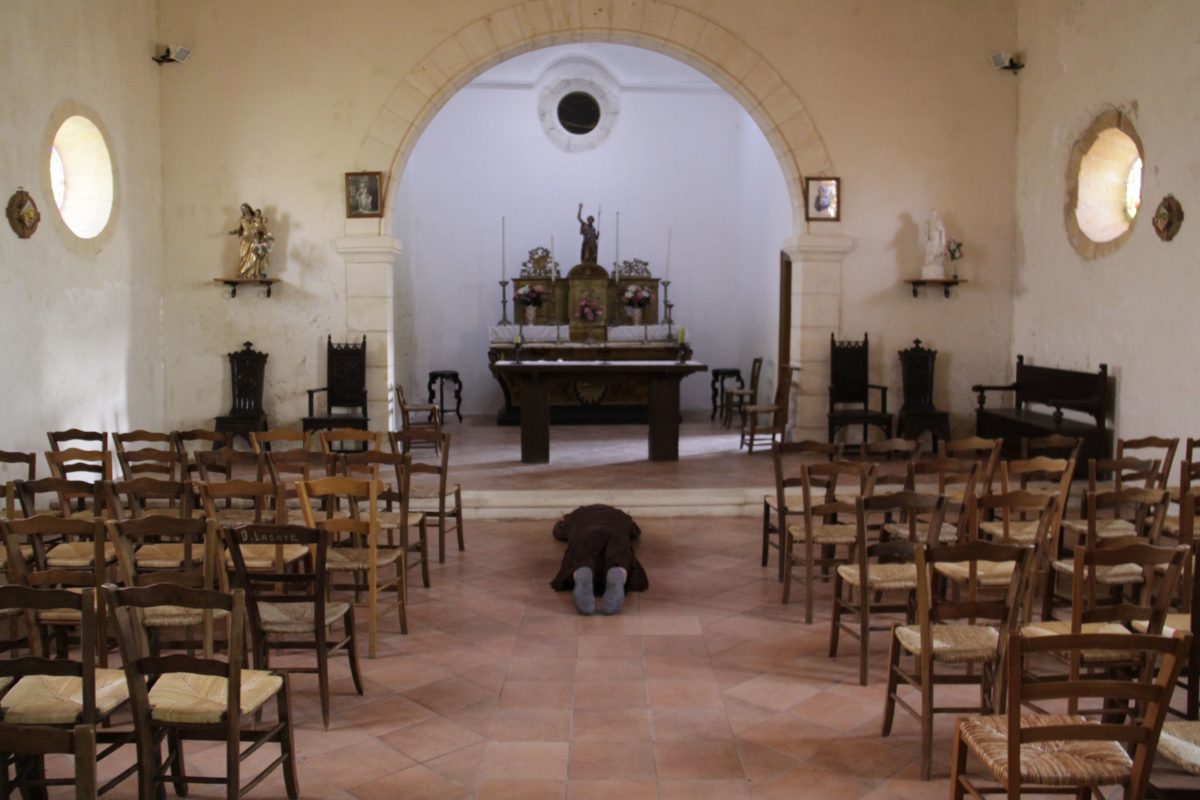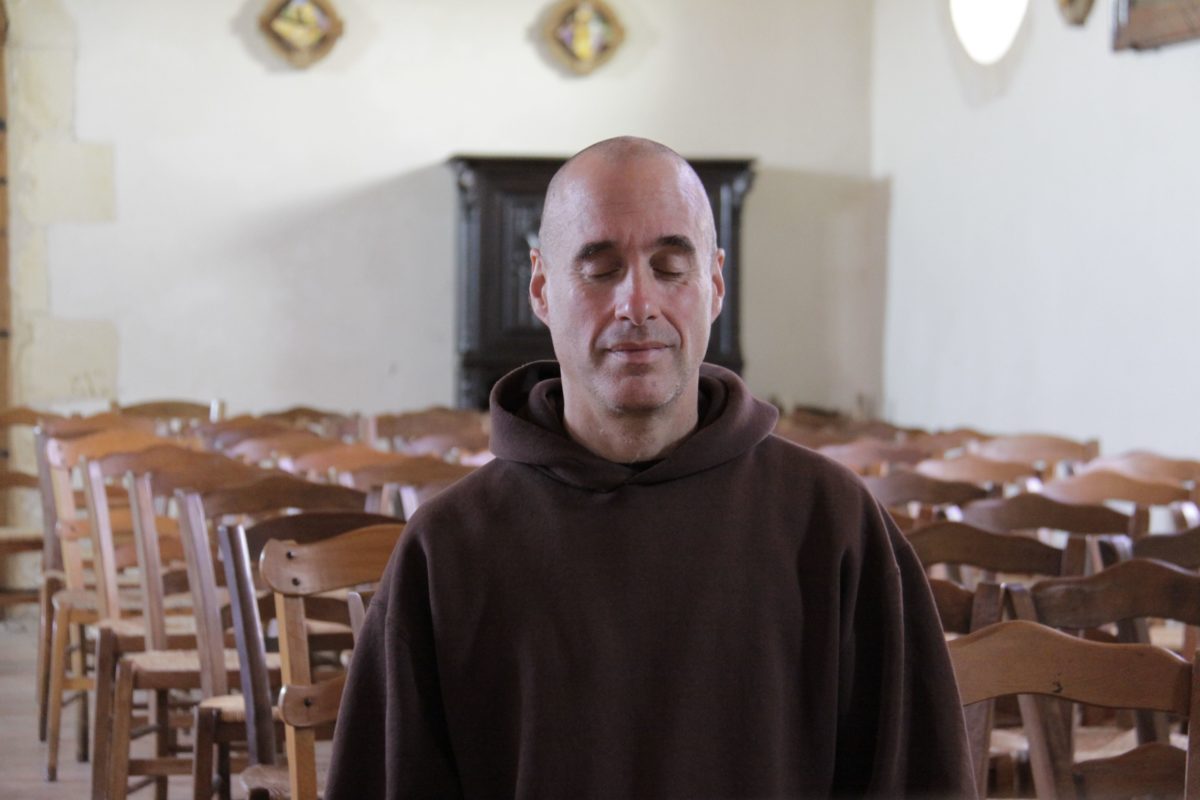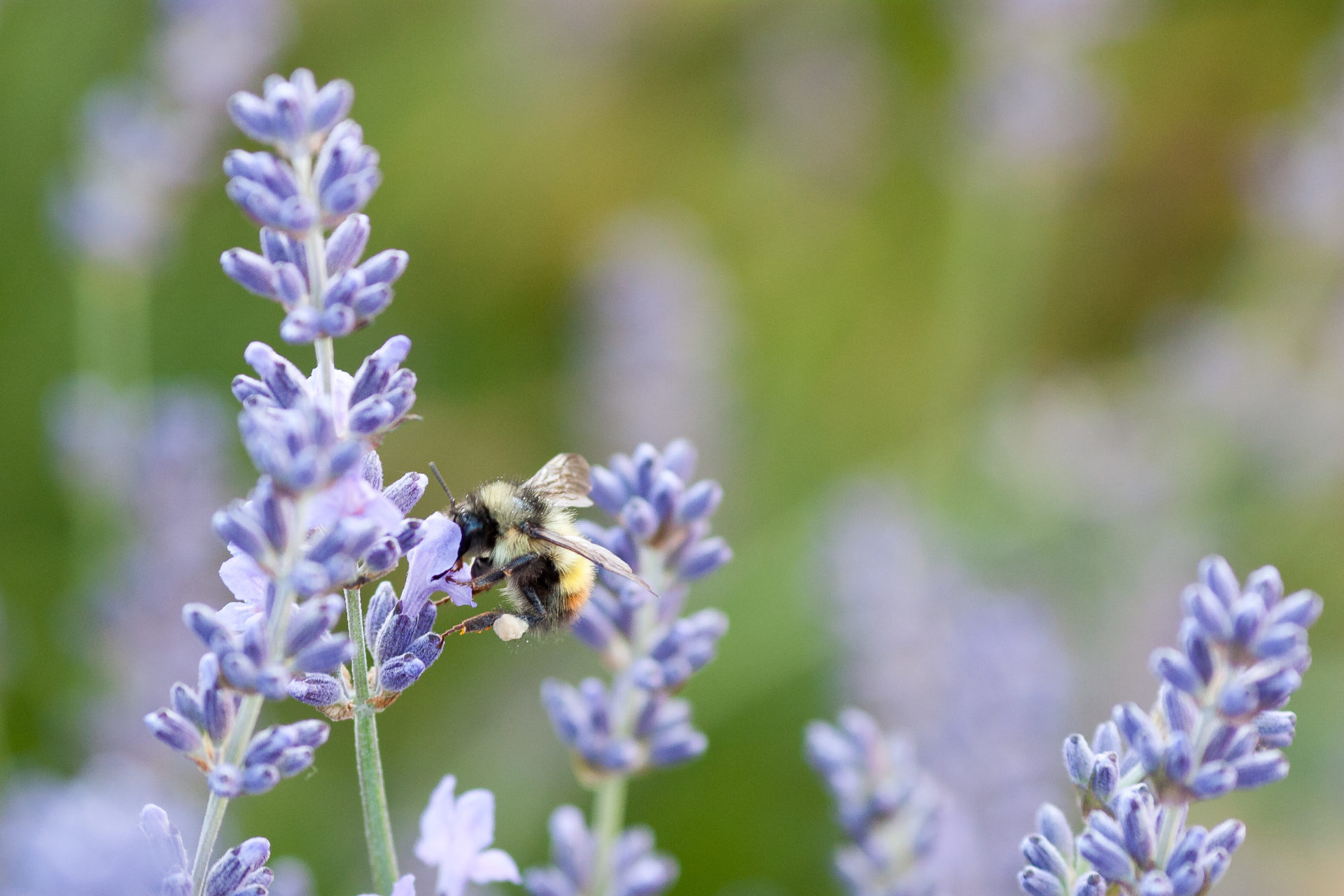Pardoning an Imperfect Church
By Brother Phap Kinh

Three times a day, around mealtimes, the brothers living in Upper Hamlet and Son Ha Temple of Plum Village can hear bells chiming from nearby churches. Whereas these bells used to call Christian practitioners to prayer,
Pardoning an Imperfect Church
By Brother Phap Kinh

Three times a day, around mealtimes, the brothers living in Upper Hamlet and Son Ha Temple of Plum Village can hear bells chiming from nearby churches. Whereas these bells used to call Christian practitioners to prayer, nowadays they mainly serve as simple reminders of the time of day. The bells are not rung by a human hand. Without enough priests in France to go around to every church, many are not open to the public.
In September 2011, eight Buddhist monks and thirteen nuns from Plum Village went for a “pilgrimage” to Abbeye Saint-Pierre, a living Benedictine monastery that is home to some fifty monks, in Solesmes, France. Our stay was part of a fraternal exchange between the two monasteries. Every two years, two monks from Solesmes come to Plum Village for a short retreat, and two years later, members from our monastic community return the visit.
Elder Plum Village monastics such as Sister Jina initiated this interfaith dialogue with our Christian counterparts, opening many doors within the Solesmes monastery and to the hearts of its monks. For those of us from the Western world, this pilgrimage is the realization of our teacher’s will for us to return to our source, water our ancestral roots, and honor a common monastic tradition going back over two thousand years. For our Vietnamese brothers and sisters, it was a chance to learn about European monastic culture. It was also the first time most of us from the West had stepped foot in a Christian monastery.
Some of us with Christian backgrounds were motivated by a desire to reconcile with our past and with the Catholic Church. Although monastics are free, and even encouraged, to embrace our original spiritual ancestors, it is not always easy to feel connected. Some of us suffered in our religions of origin.
A Living Church
My father’s family was Polish Catholic and my mother was Orthodox, from Montenegro. I was born in a Catholic hospital in Juneau, Alaska, and attended a Catholic grade school and later a Jesuit all-boys high school. Many Polish Catholic families dream of having a priest or nun as one of their family members, and my Polish grandmother prayed I would become a priest.
Over the years, I have had many misgivings about the church and Christianity. I had never forgiven the Catholic Church for requiring my mother to abandon her family’s religion in order to marry my father. As a result, a tradition was lost to us. Since becoming a Buddhist monk, I have felt relatively at peace with my past, though my stay at Solesmes was a test to see if I had more wounds to heal and bridges to mend.
The first impression that many of us had upon entering the Abbey church, the heart of the Saint-Pierre monastery, was its vitality. The church felt alive, by virtue of the many monks praying and singing in it seven times a day. The well-being of the monastery was reflected in its gardens, buildings, and cloistered walks. I realized that this was my first time experiencing a truly living Catholic church.
The feeling of familiarity and brotherhood was strong and heartfelt from the moment we arrived. When the bells were rung during our stay, we saw the monk who was pulling the cord. And rather than simply reminding the locals that it was time for lunch, the bells corresponded to the chants and prayers inside the church, sung and spoken by a community of brothers who had dedicated their lives to beauty and worship.
This insight brought me to a deeper understanding of the suffering of the Catholic Church that I had known all of my life. The hospital and school in Juneau, run by missionary sisters, were closed during my childhood, as has been the case for countless churches throughout Europe and the Americas in recent decades. But even before they had closed, the nuns had difficulty fulfilling their mission as their numbers dwindled. And if enrollment was still high in the Jesuit high school I attended, there was a sense that the priests were losing their grip on the situation, as the times, they were a-changin’. Sometimes the Church tried to hold on by asserting authority, but to increasingly deaf ears. Looking back, I see that we were living in the shell of a church past its prime. Individual members certainly tried their best, but the church as a whole lacked life and joy.
My experience in Plum Village is quite the opposite. If we lack the resources of the Catholic Church, we are nevertheless expanding and full of vitality. Our community seemed very young to the Benedictine brothers of Solesmes, and they were amazed by our numbers and the centers we have opened worldwide. Our relatively short existence—Plum Village celebrates its 30th anniversary this year, whereas Solesmes celebrated its 1000th year in 2010—makes everything we do modest in scale and scope. For example, it is hard to imagine Plum Village monastics running a hospital or a school. But our community is marked by a sense of being at the beginning, rather than at the end, of something major, something with the potential to flourish and last for centuries. Whatever forms the future may take, we know that we are the first generation of a Buddhism newly planted in the West.
Observing the life of our Benedictine brothers, the longevity of their vocation, and the depth and beauty of their practice, I was overcome with compassion for those within it who know that the Church has seen more glorious days. And yet the brothers continue to garden, build furniture, and publish books. Although their numbers are waning, they seem content to have four novices in their fold. They know that throughout history, conditions have come and gone, and that monastic life in Europe has alternately thrived and suffered throughout periods of revolution, war, and famine, but also of stability, peace, and feast. These dedicated brothers have chosen to offer their life to humanity, singing and praying for its well-being.

Rooted in Gratitude
Looking with compassion, I no longer feel a need to fault the Church for what I may once have perceived as its arrogance, dogmatism, narrowness, discrimination, or exclusivity. I am thankful for the excellent education I received from nuns who were far from home and doing their best with very limited means. If some priests were unable to answer satisfactorily my spiritual queries, others took good care of my family in times of need. They made mistakes, but so have, and so will, we. Our teacher does not ask us to be perfect; he only asks us to try our best. And at the very heart of Jesus’ many wonderful teachings is to love and forgive both others and ourselves, unconditionally, and in spite of all our so-called trespasses.
The practice of Beginning Anew allows us to praise others’ strengths, convey gratitude, and express our regrets and suffering. It was in a spirit of beginning anew and reconciliation that during a visit last summer to the town of my birth—my first as a monk—I visited my former grade school and parish church. Alone in the church, I touched the earth in gratitude to my teachers and spiritual ancestors from that branch of the great tree. I also attended a mass in the Catholic cathedral followed by a chanted vespers service in the Orthodox church just across the street. In so doing, I honored my ancestors on both sides of my family tree.
If my visit to Solesmes served to reaffirm my engagement to my current monastic life in Plum Village, it also filled me with admiration and love for the beautiful path of our monastic brothers and sisters in Christian monasteries. We are because they are. And in the true spirit of equanimity as taught by our teacher, I sincerely hope that others will follow their path, which is parallel to and not in competition with the one I currently follow.
Before inviting the great bell in Upper Hamlet, I thank my spiritual ancestors, Catholic, Orthodox Christian, and Buddhist alike, for sending me to Plum Village. I feel very fortunate to have these three roots. Thay teaches us that a tree with multiple roots is stronger than one with a single root. In this lifetime, I became a Buddhist monk rather than a Christian priest. I believe my grandparents in me are all pleased with my choice because I am here for our collective happiness and well-being. I dedicate my monastic life to my ancestors, as well as to all my friends and loved ones, and to the entire international mahasangha.
When I invite the great bell, I express the wish that all people, animals, vegetables, and minerals will be happy and free of suffering. And when I listen to the chimes from nearby Christian churches, I now think with maitri and gratitude of my brothers in Solesmes going off to chant, and I take them as melodious bells of mindfulness. May every minute and every second of our days and nights be well.

Phap Kinh/Dharma Meridian/Brother Christopher is a novice monk in Upper Hamlet, Plum Village. He is French and American, was born in Juneau, Alaska, and lived in Paris for twenty-five years before ordaining. He likes hiking, singing, climbing trees, and watching butterflies and clouds.

